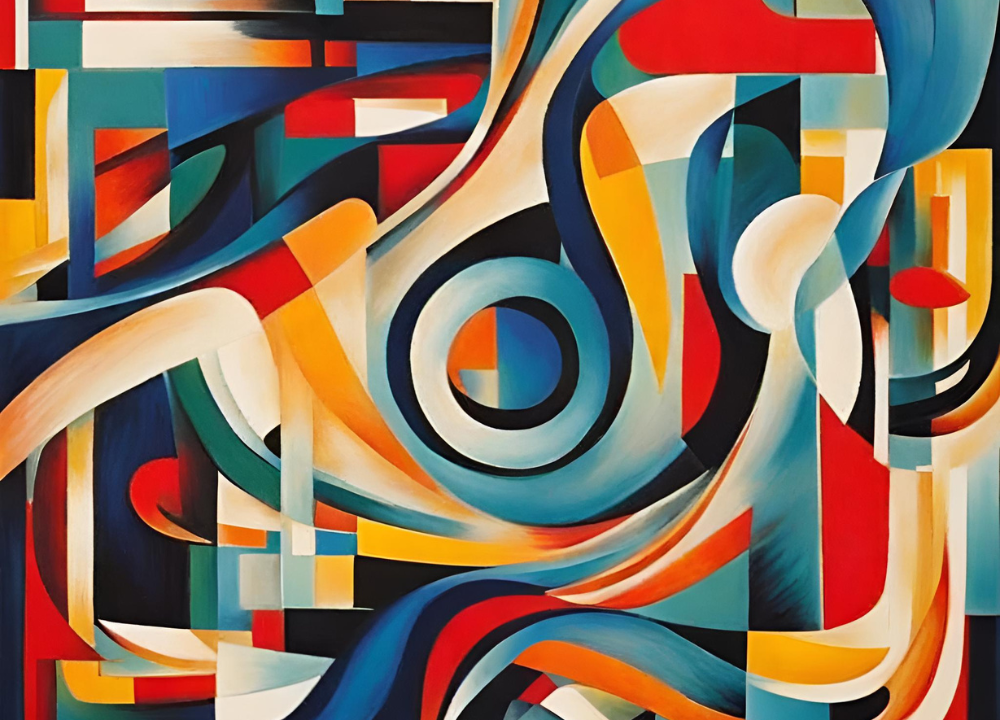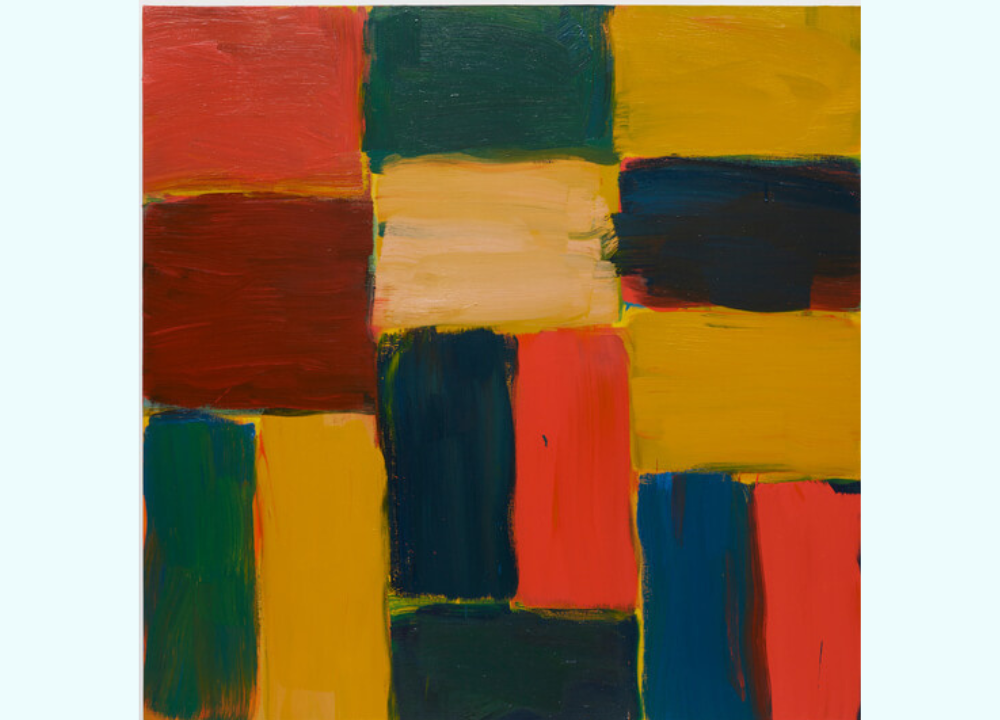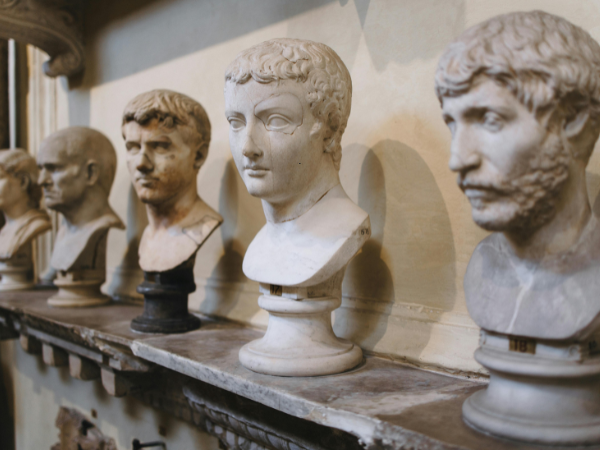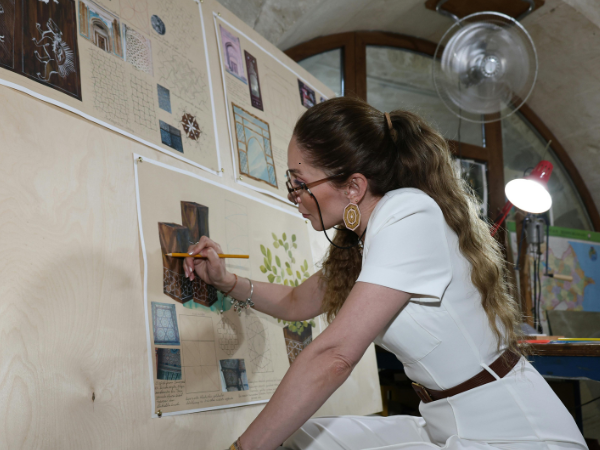Famous Abstract Art is a significant movement in modern art history, characterized by non-representational and non-figurative works. It emerged in the early 20th century and sought to capture emotions and ideas through form, color, and texture.
Abstract art challenged traditional artistic techniques and pushed the boundaries of creativity, inspiring artists to explore new ways of expressing themselves. The movement includes notable figures like Wassily Kandinsky, Piet Mondrian, and Jackson Pollock, whose innovative approaches continue to influence contemporary art.
With its diverse styles and interpretations, abstract art invites viewers to engage with the artwork on an emotional and intellectual level, sparking individual perceptions and experiences. This introduction will further explore the impact and evolution of famous abstract art, shedding light on its enduring significance in the art world.
The Origins Of Abstract Art
Abstract art, a genre characterized by its non-representational approach to art, has a rich history that spans across cultures and periods of time. The origins of abstract art can be traced back to various early influences that laid the foundation for this revolutionary art form.
Early Influences
In exploring the emergence of abstract art, it is crucial to recognize the impact of early artistic movements and artists who paved the way for its development.
- The Impressionist movement of the late 19th century, led by artists such as Claude Monet and Edgar Degas, challenged traditional artistic conventions by focusing on capturing fleeting moments and impressions rather than precise representation. This departure from realism planted the seeds for future experimentation with non-representational forms.
- The Post-Impressionist movement, with artists like Vincent van Gogh and Paul Cézanne, further pushed boundaries by exploring subjective perspectives and vivid colors, setting the stage for the exploration of emotions and personal expression.
- The Fauvist movement emerged in the early 20th century, with artists like Henri Matisse and André Derain challenging traditional color palettes and embracing bold, non-naturalistic hues. This departure from realistic color representation laid the groundwork for abstract artists to explore the emotional and expressive power of color.
- The Cubist movement, spearheaded by Pablo Picasso and Georges Braque, revolutionized artistic representation by breaking down subjects into geometric shapes and multiple viewpoints. Their deconstruction of form and perspective provided a new lens for artists to explore the abstract.
Development Of The Genre
The development of abstract art as a genre was a gradual process fueled by the intersecting influences of various movements, artists, and cultural shifts.
- Expressionism emerged as a significant influence on abstract art, with artists such as Wassily Kandinsky and Franz Marc exploring the emotional and spiritual dimensions of art through vivid colors, shapes, and gestural brushwork.
- Surrealism took abstract art to new realms with artists like Joan Miró and Salvador Dalí using dreamlike imagery and symbolism to tap into the unconscious mind. This movement expanded the possibilities of abstract expression.
- Abstract Expressionism arose in the mid-20th century and marked a turning point in the development of abstract art. Artists like Jackson Pollock and Mark Rothko embraced pure abstraction by emphasizing the act of creation and the expression of emotions through color, line, and form.
These various influences and movements set the stage for the emergence and development of abstract art as a distinct genre, opening up endless possibilities for artistic expression beyond representation. Today, abstract art continues to captivate viewers, provoke emotions, and challenge artistic boundaries.

Key Artists In Abstract Art
Famous abstract art has been a driving force in the art world, influencing and inspiring generations of artists. This artistic movement focuses on expressing emotional and visual concepts in a non-representational way, utilizing shapes, forms, colors, and textures to convey meaning. The key artists in abstract art have played a pivotal role in shaping the movement and leaving a lasting impact on the art world.
Pioneers Of The Movement
The pioneers of abstract art laid the foundation for the movement, challenging traditional artistic conventions and paving the way for future generations of artists. Notable pioneers include:
- Wassily Kandinsky
- Piet Mondrian
- Kazimir Malevich
Influential Figures
Several influential figures have significantly contributed to the evolution of abstract art, leaving an indelible mark on the movement. These figures include:
- Jackson Pollock
- Mark Rothko
- Joan Miró
- Willem de Kooning
- Louise Bourgeois
Techniques And Styles In Abstract Art
Famous for its diverse and groundbreaking styles, abstract art encompasses various techniques, each with its unique approach to creation. From the vibrant and expressive action painting to the harmonious and serene color field painting, the world of abstract art offers a wide array of artistic styles that continue to captivate audiences.
Color Field Painting
Color field painting is a style within abstract art that emphasizes large areas of flat color, with minimal use of texture or line. Artists employing this technique aim to create a sense of profound spatial depth through the careful arrangement of color and form. Inspired by the emotional and psychological effects of color, artists like Mark Rothko and Helen Frankenthaler pioneered the color field movement, enveloping viewers in a transcendent visual experience.
Action Painting
Action painting, also known as gestural abstraction, focuses on the physical act of painting itself. Utilizing spontaneous and unrestrained brushwork, artists engage in a dynamic and kinetic process, allowing the energy of the moment to dictate the artwork’s creation. Pioneered by artists like Jackson Pollock, action painting seeks to capture the raw and unfiltered essence of the artist’s movements, resulting in compelling and expressive compositions.
Impact And Legacy Of Abstract Art
Abstract art, characterized by its non-representational forms and emphasis on the expressive power of color and brushstrokes, has left an indelible mark on the world of art. Its impact is seen in the way it sparked an artistic revolution, influenced artists worldwide, and continues to inspire countless creative minds.
Artistic Revolution
The emergence of abstract art in the early 20th century marked a significant artistic revolution. Artists like Wassily Kandinsky and Kazimir Malevich challenged traditional notions of representation and pushed the boundaries of what art could be. By breaking away from the constraints of realism, they opened up a whole new world of possibilities for artistic expression.
This artistic revolution was fueled by a desire to free art from the shackles of imitation and conformism. Abstract art provided a platform for artists to explore their inner thoughts, emotions, and ideas, allowing for a deeper and more personal connection between the artist and the viewer. It encouraged experimentation, pushing artists to think outside the box and question the conventional norms of art.
Global Influence
The impact of abstract art extends far beyond its birthplace. Its influence can be seen in artistic movements and styles around the globe. From the abstract expressionism of American artists such as Jackson Pollock and Mark Rothko to the geometric abstraction of the Russian avant-garde, abstract art has transcended borders.
Abstract art opened up new possibilities for self-expression and cultural exchange. Artists from different cultures and backgrounds embraced the freedom and abstraction offered by this art form, creating their own unique interpretations and styles. This cross-pollination of ideas and techniques resulted in a vibrant and diverse abstract art scene that continues to evolve and inspire today.
Moreover, the influence of abstract art extends beyond the realm of visual arts. It has had a profound impact on other creative disciplines such as design, architecture, and even music. Abstract concepts of form, color, and composition have found their way into various aspects of everyday life, shaping our aesthetic preferences and understanding of the world around us.
In conclusion, the impact and legacy of abstract art are undeniable. Its artistic revolution challenged traditional norms, while its global influence transcended borders and inspired artists across disciplines. Abstract art continues to be a powerful force, pushing the boundaries of creativity and inspiring new generations to think beyond the limitations of representation.

Appreciating Abstract Art Today
Abstract art has long been a staple in the world of creativity, captivating audiences with its vibrant colors, bold shapes, and thought-provoking compositions. Today, abstract art continues to hold immense significance and continues to evolve, providing a myriad of opportunities to stimulate our senses, evoke emotions, and challenge our perceptions. In this blog post, we delve into the world of abstract art and explore two pivotal aspects of this artistic genre: interpreting abstract art and collecting abstract art.
Interpreting Abstract Art
Abstract art is renowned for its open-ended interpretations, allowing viewers to engage with the artwork on a personal level. As a viewer, it is important to approach abstract art with an open mind, embracing the freedom to assign your own meanings and emotions to the artwork. Here are a few tips to help you interpret abstract art:
- Observe the composition: Analyze the arrangement of colors, shapes, lines, and textures. Pay attention to how these elements interact with one another and the overall balance of the artwork.
- Embrace the emotion: Abstract art often conveys emotions through the use of bold colors and expressive brushstrokes. Take a moment to connect with the artist’s intended emotion and explore how it resonates with your own experiences.
- Consider the artist’s intent: Research the artist and their background to gain insight into their artistic journey and influences. This can provide valuable context and deepen your understanding of the artwork.
Collecting Abstract Art
If you are drawn to the captivating allure of abstract art, you may be considering building your own collection. Whether you are a seasoned collector or new to the art world, here are a few tips to help guide you:
- Research, research, research: Familiarize yourself with different artists, art movements, and galleries. Attend exhibitions and art fairs to discover emerging talents and explore a wide range of styles.
- Trust your instincts: Collecting art is a personal journey, so it is crucial to trust your own taste and intuition. Purchase artworks that resonate with you and evoke strong emotions.
- Consider your budget: Collecting abstract art can be a significant investment, so establishing a budget is essential. Explore options such as limited edition prints or artworks by emerging artists that may be more affordable.
Appreciating abstract art today is an immersive experience that allows us to tap into our creativity, broaden our perspectives, and embrace the beauty of the unknown. By interpreting abstract art and venturing into the world of collecting, we can forge a deeper connection with this captivating artistic genre.

Frequently Asked Questions Of Famous Abstract Art
What Is Abstract Art?
Abstract art is a form of art that does not attempt to represent an accurate depiction of visual reality. Instead, it uses shapes, colors, forms, and gestural marks to achieve its effect, emphasizing the expressive or emotional value rather than the literal representation.
It encourages an individual interpretation and can evoke different emotions and reactions from each viewer.
Who Are Some Famous Abstract Artists?
Some famous abstract artists include Wassily Kandinsky, Piet Mondrian, Jackson Pollock, Mark Rothko, and Joan Mitchell. These artists played a significant role in the development and popularization of abstract art, exploring new techniques and ideas that revolutionized the art world.
How Can I Appreciate Abstract Art?
To appreciate abstract art, it’s important to approach it with an open mind and allow yourself to experience the artwork on a personal level. Look for patterns, colors, and shapes that catch your attention, and try to understand the emotions or ideas the artist might be conveying.
It’s also helpful to learn about the artist’s background and the context in which the artwork was created.
Is Abstract Art Subjective?
Yes, abstract art is subjective, meaning it can be interpreted differently by different people. The absence of recognizable objects or figures allows for a wide range of interpretations and emotional responses. Each viewer brings their own experiences and perspectives, resulting in a unique understanding and connection to the artwork.
Conclusion
Abstract art has revolutionized the art world with its unique expression and unbridled creativity. From pioneers like Wassily Kandinsky to modern-day artists, abstract art continues to captivate and challenge viewers. With its ability to evoke emotions and ignite imagination, this genre has left an indelible mark on the art scene.
Its limitless possibilities and interpretation make it an ever-evolving and fascinating field. As you explore the world of famous abstract art, you’ll discover new perspectives, endless inspiration, and a profound appreciation for human creativity and innovation. So, immerse yourself in this extraordinary realm and let abstract art take you on a journey of self-discovery and artistic exploration.




